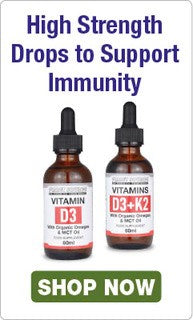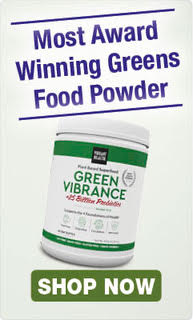Vitamin D is an essential nutrient for immune, bone and muscle health, but in recent years there has been confusion surrounding the optimal delivery method.
OK, perhaps that is not quite true: few would argue that there is a superior source of vitamin D than the sun.
In a perfect world, we would all enjoy the refulgent glow of sunlight on our skin each day. Of course, the sun provides nourishment that goes beyond topping up our vitamin D levels – but for the purpose of this article, we’ll focus exclusively on its vitamin D-stimulating ability.
The climate being what it is, Vitamin D supplementation is required for many of us to achieve healthy blood levels, and to enjoy the attendant benefits for immunity, energy, muscle strength and bone density.
Indeed, Public Health England recommends that adults and children aged one and over consider using a daily supplement containing 10mcg of vitamin D – especially during autumn and winter.
Those who are at an elevated risk of deficiency, meanwhile, such as people with dark skin and those who spend prolonged periods indoors (i.e. nightshift workers) are advised to supplement year round.
But which form of supplement is best? Are vitamin D sprays effective? And if so, is vitamin D spray better than pills or capsules?
Some people swear by vitamin D gummies or chewable tablets, while others contend that sublingual vitamin D dissolvable tablets are superior due to ease of absorption.
In this blog, we intend to summarise the key differences between various vitamin D supplements to help you make a better decision.
What are Vitamin D Tablets For?
Vitamin D tablets are by far the most popular type of vitamin D supplement on the market.
Tablets come in the form of vitamin D2 (ergocalciferol) or vitamin D3 (cholecalciferol).
We have written an article outlining the key differences between the two (Vitamin D2 vs D3), but suffice to say D3 is the superior choice, proving to be twice as effective at raising the serum biological marker of vitamin D status as D2.
As is always the case with supplements, quality varies between manufacturers.
Your chief concerns when purchasing a vitamin D supplement should be twofold: purity and potency.
While the PHE recommend using a supplement containing 10 mcg (or 400 i.u.), the Vitamin D Council suggest a much higher daily dose for healthy adults of 125 mcg (5,000 i.u.).
The daily recommended dose in Canada and the United States, incidentally, is 15 mcg (600 i.u.) – odd given that both countries enjoy greater periods of sunshine than the UK.
Potency, meanwhile, concerns the number of additional ingredients contained in the vitamin D tablet.
At a glance, these can include artificial colours, flavours, chemicals and fillers, not to mention sugar, hydrogenated oils and talc.
Manufacturers add these extra ingredients to tablets to protect them from stomach acid, which can affect how much vitamin D will absorb into the blood and have a positive effect.
In other words, vitamin producers protect the vitamins in their tablets with coating and shellacs.
It is therefore worth scrutinising the product label to see exactly what you’re getting – and to decide how many additives you can live with.
Quality vitamin D tablets nonetheless prove effective at raising one’s vitamin D levels, providing the person is healthy.
The main drawback is when the individual suffers from gastrointestinal issues which blunt the impact of vitamin D tablets, necessitating an alternative method.
How long do vitamin D tablets take to work? That depends very much on how deficient you are to start with.
Those who weigh more also tend to require higher amounts of vitamin D.
It’s a good idea to buy a vitamin D test kit to track your progress post-supplementation.
Meantime, take a look at our article How to Get Vitamin D Levels Up Fast!
Vitamin D Spray vs Pill: Is There a Winner?
Oral vitamin D sprays have become more popular in recent times. Unlike tablets, which of course go the way of food, vitamin D sprays are primarily absorbed via membranes in the oral cavity.
For the aforementioned group suffering from gut problems, vitamin D sprays offer a solution because the nutrient circumvents the gastrointestinal tract and makes its way directly to the blood.
Malabsorption problems are, well, not such a problem.
In a 2016 RCT which compared the effectiveness of the aforementioned two supplements, oral spray was shown to be just as useful as regular supplementation at increasing vitamin D concentrations among healthy adults.
‘Just as useful’ isn’t better, but it’s fair to say that some people prefer vitamin D spray to pills or tablets.
One reason might be the convenience, since some people have trouble swallowing pills or capsules.
Another might be that some vitamin D sprays contains triglycerides, which may aid absorption. Some people just prefer the taste.
With all that said, vitamin D oral sprays tend to be on the expensive side. Some sprays may also contain artificial flavours to improve palatability, just like regular vitamin D tablets.
Sublingual Vitamin D: Pros and Cons
Sublingual vitamin D tablets are similar to regular vitamin D tablets, but with one key difference: they come without the artificial components.
Actually there are two key differences, since sublingual tablets dissolve beneath the tongue, bypassing the digestive system much in the way of an oral spray.
Because they are without the additives and coatings of traditional vitamin D supplements, sublingual tablets are far smaller.
Take Frunutta’s range, for example: the only surplus ingredients in these doctor-formulated vitamins are tiny amounts of lactose (to help the dissolving process) and acacia gum (to hold the pill together). Otherwise, you’re getting pure vitamin.
That’s rarely the case for chewable vitamin D tablets and gummies, which often contain sugar – sometimes as the primary ingredient!
Due to their quick-dissolving capacity, sublingual vitamin D micro tablets are recommended to the same people who may gravitate towards oral sprays; namely, those suffering from malabsorption problems.
They are also a good bet for anyone wishing to minimise their consumption of artificial ingredients or avoid intravenous vitamin D injections.
The Verdict
Clearly there are many ways to get more vitamin D into our system.
If heading off on a Caribbean cruise isn’t feasible, though, you can brighten your internal health whatever the weather by using a quality supplements, be they vitamin D sprays, capsules, sublinguals or gummies.
Hopefully the aforementioned options help you make a more informed decision.
Incidentally, these are not the only vitamin D sources. It is also possible to up one’s intake from food sources, including fatty fish, egg yolks, beef liver and cheese.
Truth be told, achieving healthy vitamin d levels from diet alone is well nigh impossible however. While some people with chronic vitamin D deficiency might consider intravenous vitamin D, such infusions can be costly.
Oh, and if you’re worried about taking too much vitamin D, don’t be: the overwhelming majority of supplements contain less than both the accepted ‘safe upper limit’ of 4,000 i.u. per day, and the No Observed Adverse Effect Level (NOAEL) of 10,000 i.u.
Only when you start routinely taking over 10,000 i.u. per day, and for a prolonged period of months, are you tempting fate.
In fact, in a recent study of 20,000 people, only one person had genuine vitamin D toxicity (364 ng/ml). And that person had been taking an astonishingly high dosage of 186,900 i.u. every single day for two months!
Water for Health Ltd began trading in 2007 with the goal of positively affecting the lives of many. We still retain that mission because we believe that proper hydration and nutrition can make a massive difference to people’s health and quality of life. Click here to find out more.




























Leave a comment